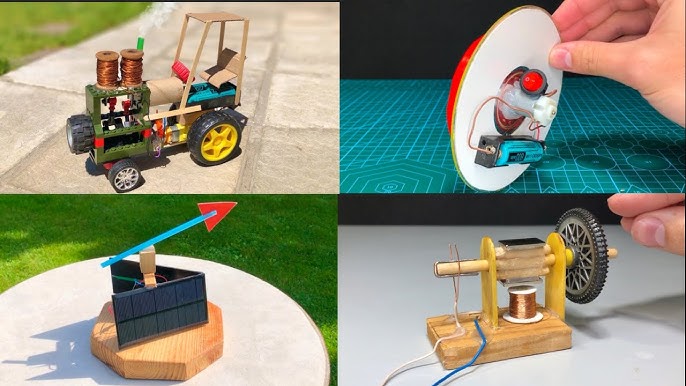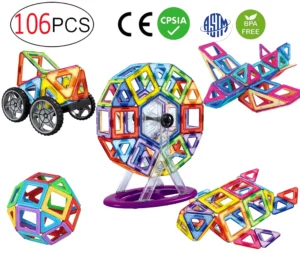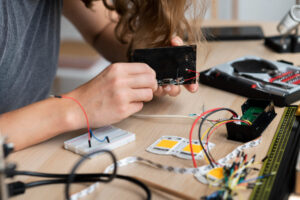Do you enjoy tinkering with technology and curious to find out more? DIY tech projects offer an excellent way to explore science and engineering while simultaneously making your home smarter.
DIY learning offers many advantages, from encouraging creativity to cultivating practical skills and self-directed learning – as well as providing opportunities for family bonding.
1. Smart Lighting System
Home lighting upgrades can dramatically change the feel and atmosphere of a space. Smart lights offer added convenience and energy efficiency, and can be controlled remotely using smartphones or voice assistants. Furthermore, these smart bulbs can integrate with other smart devices to add automation or create customized scenes based on occasions or occasions – such as creating an automatic “goodnight” routine that shuts all lights off before bed.
Smart lighting systems consist of many components, including LED strips or bulbs, controllers, and power supplies. When choosing a brand for your smart lighting system, choose one with color-changing capabilities that is compatible with existing lights in your space and is sufficient to cover its entirety.
DIY smart lights can include sensors to detect motion or ambient sound, and change colors based on temperature, humidity and proximity to objects. Bruna Calheiros of University of Southern California recently created an incredible crystal mood ball using LED lights and Arduino. Arduino is an open platform which enables users to build interactive projects and environments.
2. Automated Pet Feeder
No matter if it’s your cat or hamster, feeding time can be challenging to schedule precisely. Hearing hungry paws pounding on their bowl at 6am can be disruptive to sleep if not planned for.
DIY tech projects exist that can help alleviate this issue, such as an automatic pet feeder designed by [Darren]. It consists of an empty plastic juice bottle fitted with a hopper and screw auger to deliver food at set intervals; all controlled via Arduino programming.
This device offers several useful features, including being able to record your voice and set multiple programs. Furthermore, its schedule can be stored locally so it will continue operating even in case of wifi connectivity loss or power outage at home. Furthermore, its three AA batteries can easily be replaced without disassembling the feeder.
3. Custom Charging Station
Maintaining orderly devices can save time, money, and frustration. Tangling cords or losing chargers may delay their return to service or lead to overheating or an loss of charge on devices that were once functional. Building your own charging station can be accomplished using basic tools – and can provide customized charging solutions tailored specifically for each of your devices while matching home decor perfectly without breaking the bank with store-bought solutions.
Custom charging stations typically consist of a power strip with multiple outlets and a USB hub; the latter centralizes all plugs, enabling multiple devices to charge at once. You will also require tools like a drill for making holes to route cables through, screwdriver for assembly purposes and sandpaper for any rough edges that arise during setup.
DIY tech projects are both enjoyable and educational. Before embarking on one, it’s crucial to do your research on the technology involved – product manuals and online forums will help familiarize yourself with it while helping troubleshoot any potential issues. Furthermore, follow safety regulations when working with power tools like drills or miter saws for optimal results.
4. Home Security System
DIY tech projects provide an affordable way to upgrade your home without incurring professional installation services or costly monthly monitoring fees. Furthermore, DIY projects provide an opportunity to gain new skills such as wiring, soldering or coding that could come in handy when planning the next project you undertake.
Security systems are a vital element of any smart home, serving both as an effective deterrent against burglars and helping you keep an eye on what’s going on around the place when you’re not around. With sensors designed to detect motion, sound or vibration – such as window sensors, door/window cameras or smart locks – security systems provide peace of mind.
Choose between professional monitoring (24/7 for a monthly fee) or self-monitoring, which sends alerts directly to your smartphone. Integrating smart home technology into your security setup enhances its functionality and ease-of-use; making it an attractive solution for homeowners of any kind.
5. Speaker Bookshelves
DIY tech projects are an effective way to add functionality and familiarity with electronics and technology in your space. DIY projects provide the opportunity for hands-on learning experiences and can also serve as a useful way of discovering what you might already know!
Start any of these projects off right with some basic tools: screwdrivers of various sizes and types are essential, along with pliers and wire cutters for handling small objects and cutting or stripping wires. A soldering iron will make working with electronic components much simpler; multimeters can help troubleshoot issues and determine whether your gadgets are functioning as expected.
Have the appropriate STEM toys can encourage children to explore their interests, learn at their own pace, and build as engineers. If your young DIY enthusiast loves DIY projects, consider giving Roominate as a gift; its comprehensive building kit combines engineering, circuits, design, crafts and storytelling into an inspiring tool to encourage girls into becoming engineers.




